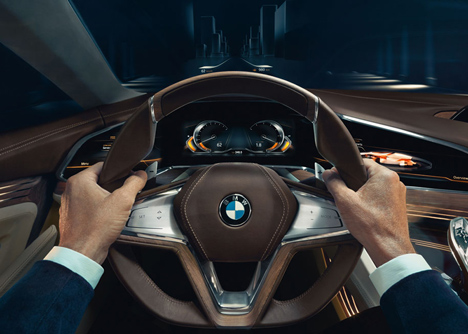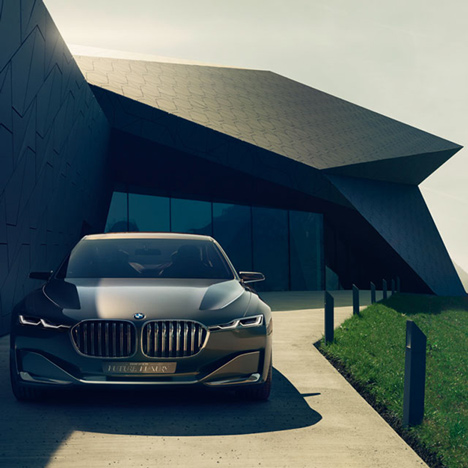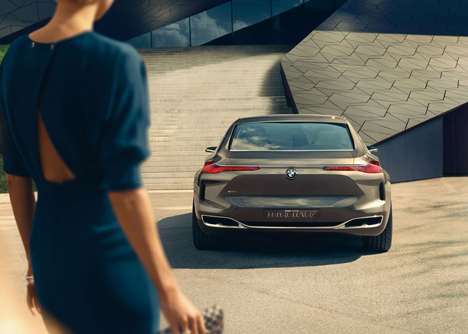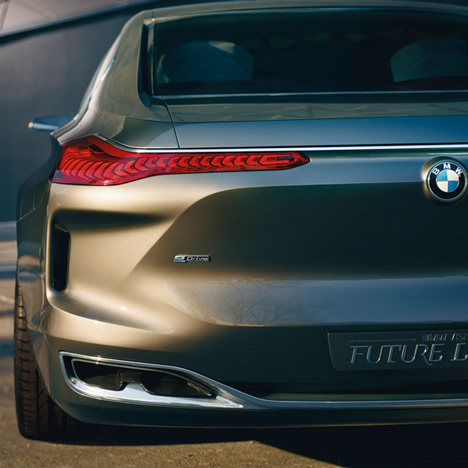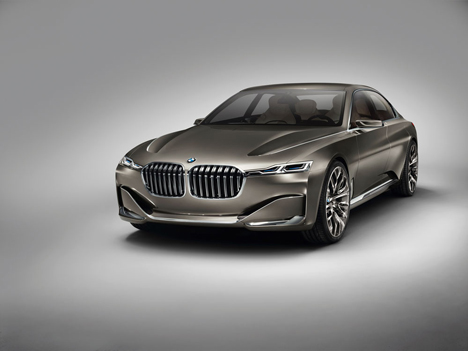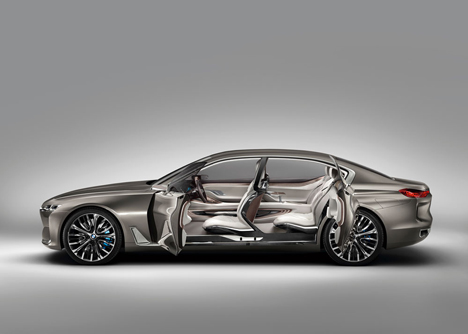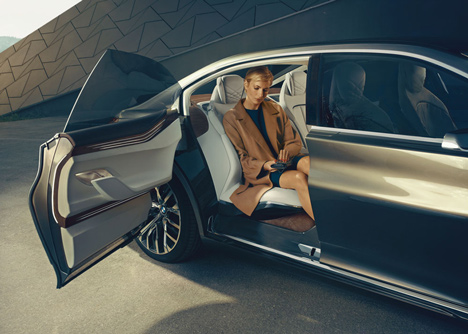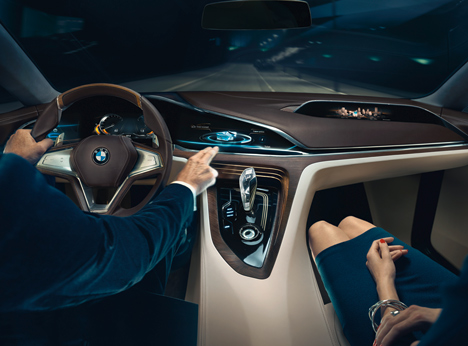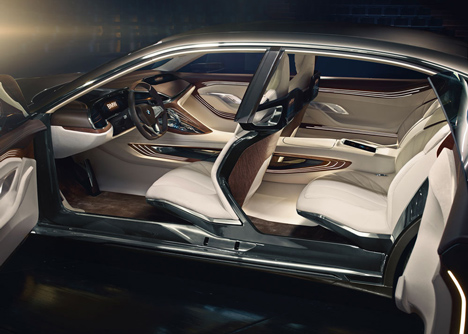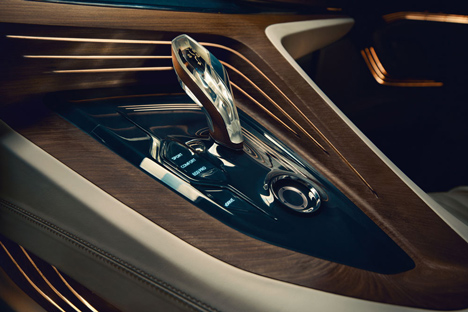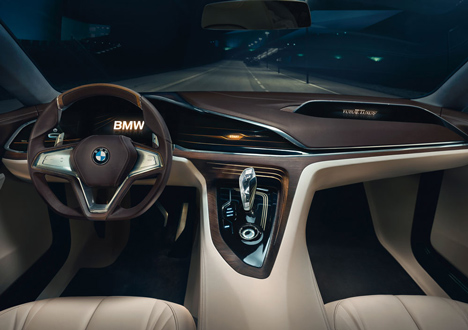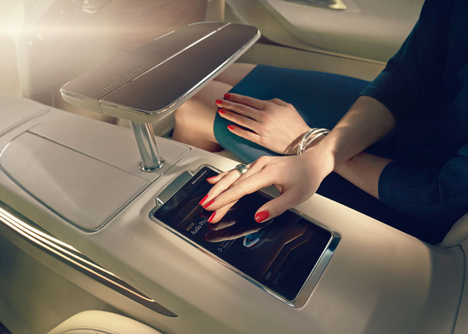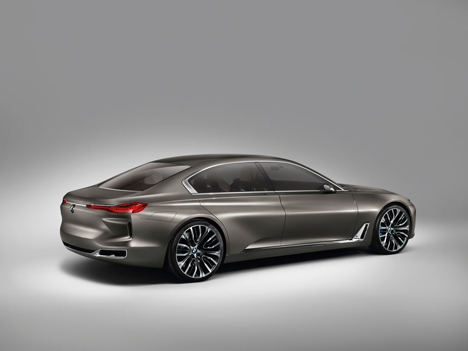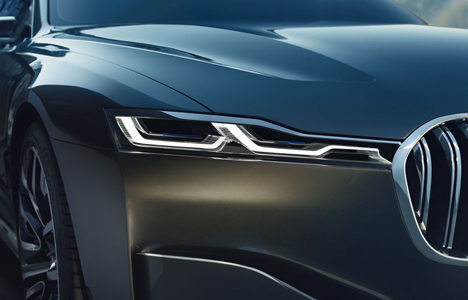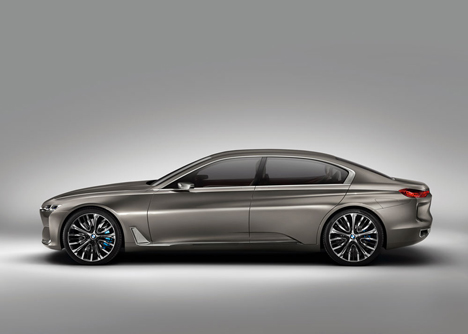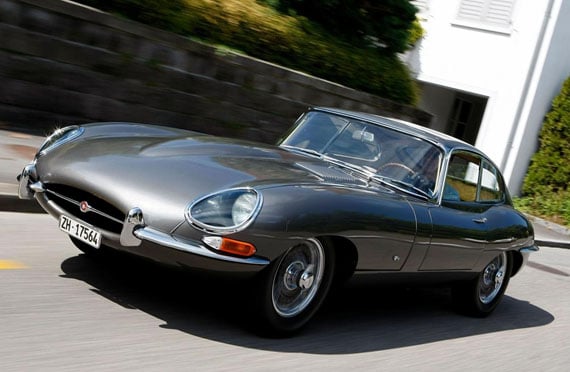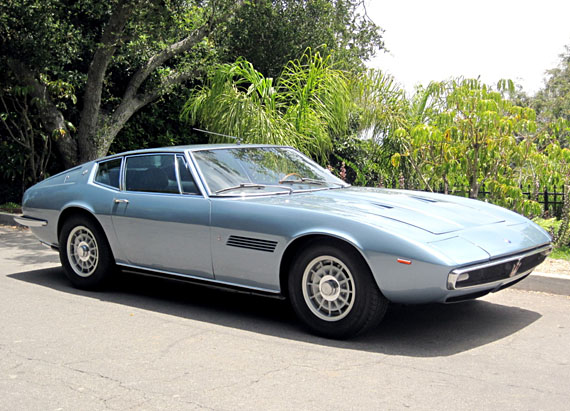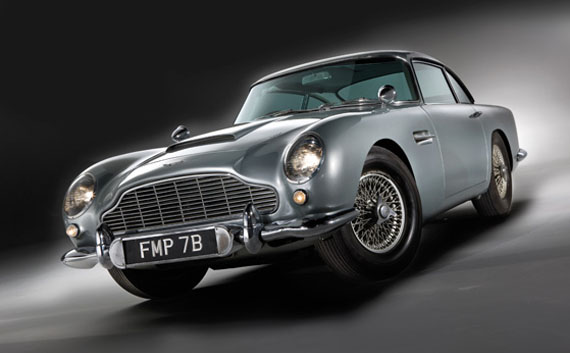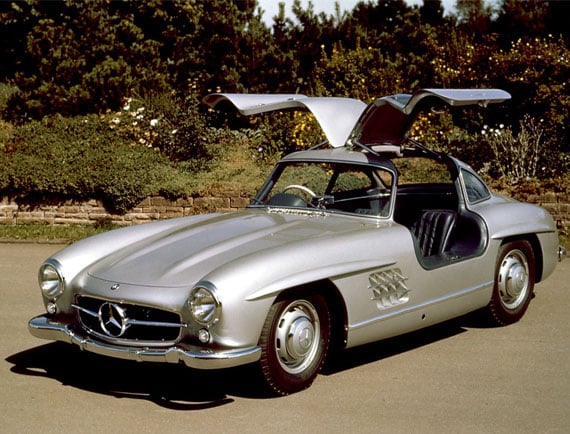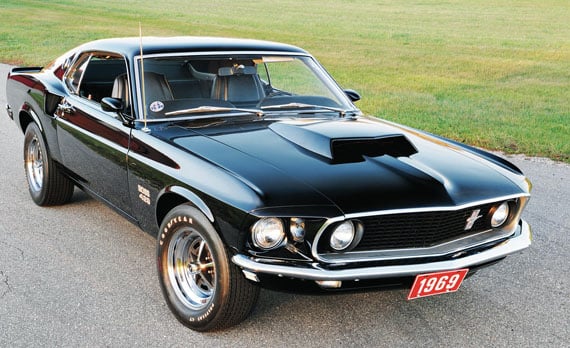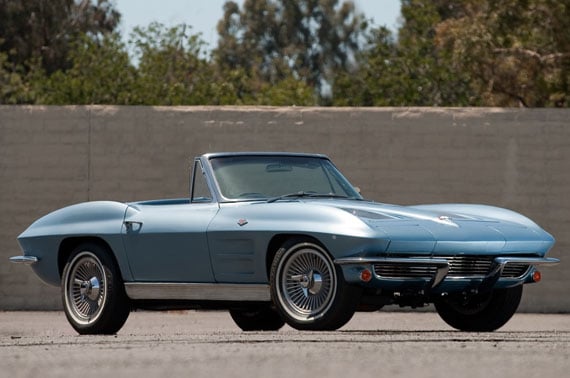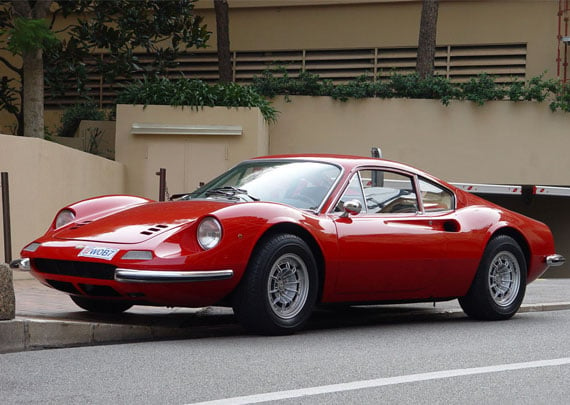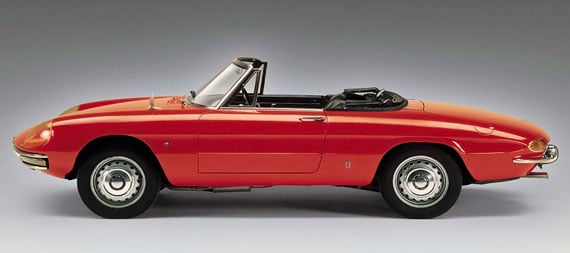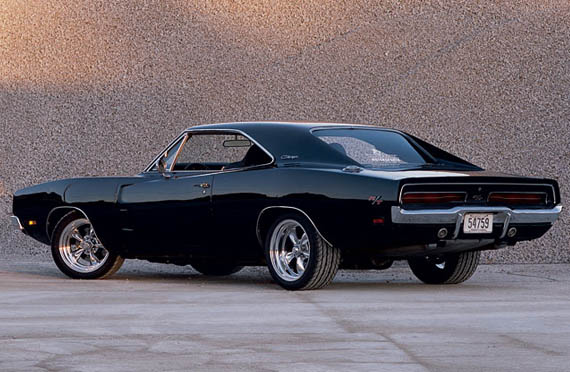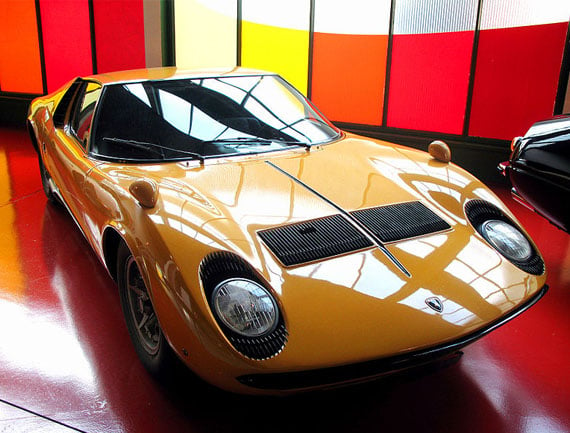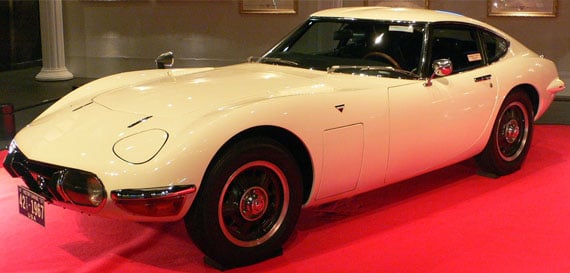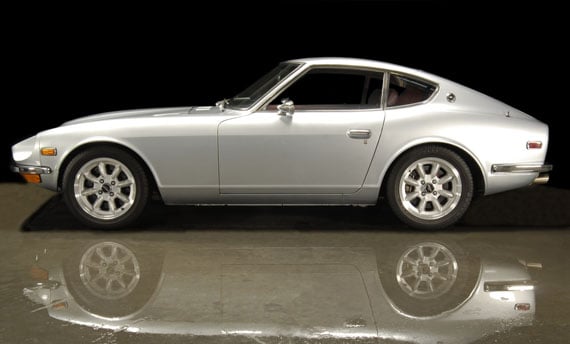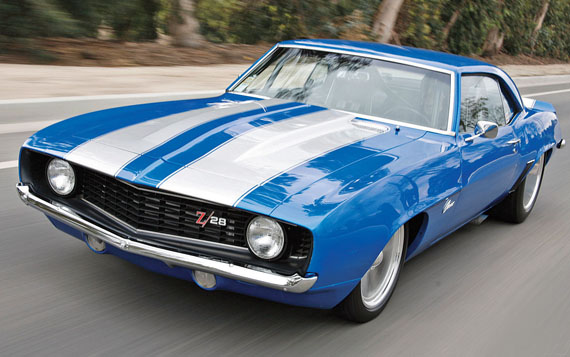|
The Gumball 3000 rally will be using its new route from Miami to Ibiza this June. Those of you that are fans of the Rally will be able to see its array of supercars this June, starting on the 4th and finishing on the 11th, after it has passed through New York, Atlanta, Edinburgh, London, Paris, Barcelona and finishing in Ibiza The annual Gumball 3000 rally is a rolling 3,000 mile festival of crazy driving and debauchery that features the world’s most exclusive supercars. This year’s race, which costs about $40,000 to participate in, will travel across two continents and five countries with various parties, concerts and VIP events along the way. |

Photo Courtesy of Gumball 3000
Every major supercar marque — including Bugatti, Ferrari, Bentley, Aston Martin and Rolls-Royce — will be represented in this year’s event, which was first started back in 1999 by ex-racing driver, designer and British entrepreneur Maximillion Cooper (he also got engaged to singer-actress Eve December of last year). The 2013 rally from Copenhagen to Monaco was won by a team from the United Arab Emirates driving a custom Lamborghini Aventador. |

Photo Courtesy of Gumball 3000
This year’s event is set to be even more hedonistic thanks to a new partnership with AnastasiaDate, a leading international escort service specializing in beautiful Russian women. Two of the firm’s sexiest “employees” will drive a Lamborghini Gallardo Spider in the race in homage to the 1981 movie Canonball Run. Injuries along the route, which changes every year, are not uncommon — in 2007 there were even two fatalities — and cars worth a small fortune have been confiscated in previous years. Fancy driving your own supercar? Have a look at our website and see what we have to offer! Source https://www.justluxe.com/lifestyle/luxury-cars/feature-1954544.php |
Design
BMW unveils their latest concept car, the Vision Future Luxury
Vision Future Luxury is the latest saloon concept car coming from BMW. The German car manufacturer unveiled the car, which features augmented display technology, hoping it will wow fans of the BMW brand.
The Vision Future Luxury concept comprises the latest iteration of BMW’s Vision Head Up Display, which augments the driver’s view of the world by projecting real-time information including speed limits and road signs onto the windscreen directly in the line of sight.
Sensors located on the exterior of the car collect environmental data, which is deciphered and transferred to a light source located inside the instrument panel. Light shining through a translucent thin-film transistor (TFT) projects the relevant data on to the windscreen via specially shaped mirrors and allows the driver to view information without having to look away from the road.
“Innovative technology and modern luxury have always been an important part of BMW’s brand DNA,” explained Adrian van Hooydonk, Senior Vice President of BMW Group Design at a preview of Vision Future Luxury in Munich. “Connectivity in a luxury vehicle has to be seamless and so well integrated that it doesn’t deter from the driving that you want to do, it actually enhances it.”
The rear lighting is provided by organic light-emitting diodes (OLEDs) for the first time on a BMW, an efficient light source consisting of wafer-thin semi-conductive layers of organic material that can be cut into any shape to allow for a variety of patterned lighting designs.
The luminescent layer is a film of carbon compound, which emits light in response to an electrical current. Each light-emitting polymer layer is roughly 400 nanometres thick, which is approximately 400 times thinner than a human hair.
Car designers have previously relied on reflectors to enable the light produced by LEDs to be seen from different angles, but OLEDs do not need reflectors, allowing designers to create less bulky and more unusual shapes. OLEDs also require less power to operate.
The roofline and sloping boot lid on the car have been designed to reduce drag, while carbon fibre openings positioned at the front and rear of the car help to channel airflow more efficiently.
“Aerodynamics and lightweight materials are key elements of this car’s design,” explained Karim Habib, head of BMW design. “Visible carbon fibre on the exterior of a luxury car is something we believe BMW needs to do.”
Carbon fibre, as a lightweight and strong composite, also allows for a minimised central B-pillar – the join between the front passenger and rear passenger doors. This allows the doors to use different hinge points to a standard car door.
The doors open to reveal a layered interior with wood, leather and aluminium finishings on top of a carbon fibre base.
“Lightweight construction is not going to go away,” says Adrian van Hooydonk. “All of our cars will have to get lighter and that means as a design team we are dealing with different types of materials, which can lead to different types of aesthetic.”
Front passengers are equipped with a personal information display, which is connected to the driver display via a touch-sensitive panel. Rear passengers also have access to two displays mounted in the headrests of the seats in front and a detachable tablet between the individual seats. All three can be used to exchange information with the front passengers using swiping movements.
Embedded user interface components from which internet-based video and music streaming can be accessed also feature.
Read on for BMW’s press release:
Heralding a new approach – the design.
“The design of the BMW Vision Future Luxury is the messenger of our philosophy of modern luxury, one in which innovative technologies play a key and vital role. These innovations deliver a new, multifaceted luxury experience that spans intelligent lightweight engineering, innovative interior design and a radically new user interface design,” says Karim Habib, Head of BMW Design, summing up the design approach to the BMW Vision Future Luxury.
This approach is particularly tangible in the interior. Throughout, the design expresses both form and function of the innovative technologies. For example, the intelligent lightweight engineering concept of the BMW Vision Future Luxury is expressed in the design principle of subtractive modelling. That is to say, the specific geometry and functions of an individual component are created from one and the same layered composite structure, comprising many different levels and materials. An initial base layer of fine carbon fabric is followed by a functional level featuring user interface components, control and display interfaces and lighting functions, which in turn is followed by a further structural, load-bearing layer of aluminium for additional strength.
Finally, the top layers comprise wood, then leather, to create a warm and comfortable ambience. In a given area of the interior, the multi-layer structure is “milled down” to the appropriate depth depending on what surface material and what function is required. Since the interior geometry is therefore always pared down to essentials, this cuts total weight substantially. This treatment also makes for virtually seamless transitions and very elegant, fluid surfaces.
The unrivalled characteristics of carbon as a material – both individually and in combination with its surrounding materials – are optimally utilised in this rigorous lightweight design concept. The carbon underlying layer is visible in the doors, under the seats and especially in the innovative, pared-down B-pillar. A full B- pillar as used in the past is dispensed with. The carbon construction allows the seat frames to be integrated into the load-bearing structure. There are also connections to the door sills and centre console, which means only a very small and unobtrusive B-pillar is required. The BMW Vision Future Luxury’s wide- opening coach doors would not have been possible without this new carbon B- pillar solution.
New-style user interface design and exclusive BMW ConnectedDrive services.
In the driver’s and front passenger’s area, precisely defined lines and surfaces create a sense of exclusive dynamism. The design of the instrument panel closely complements the design of the displays themselves. The driver is surrounded by a wrap-around cluster of three intermeshing displays, creating the typical BMW driver-centric cockpit. The three-dimensional display technology means that at the visual level the instrument panel styling appears to carry over into the displays themselves. In other words, to the eye the interior space seems to continue into the solid structures of the instrument panel, generating an impression of unprecedented depth and spaciousness.
The left-hand display mainly presents vehicle-related information, while in the centre a programmable cluster displays speedometer, rev counter and other information, as well as context-adaptive supplementary data, which is displayed as and when relevant. Meanwhile, the right-hand display – the Driver Information Display – provides additional infotainment information. The driver also has the option of controlling all these functions by voice command.
BMW Vision Head Up Display.
The primary driver display, however, is the “contact-analogue” BMW Vision Head Up Display. This display augments the driver’s view of the real world by projecting information directly in the driver’s line of sight onto the road. Buildings, traffic signs or hazards can be highlighted directly in the real-world environment, selectively directing the driver’s attention to specific information which is particularly important at any given time. This technology gives a new dimension to driver assistance functions such as Speed Limit Info, where road signs can be identified and highlighted in the driver’s field of view, or the Traffic Light Assistant, which provides real-time information about traffic light phasing.
In place of a central shared information display for driver and front passenger, the BMW Vision Future Luxury offers front passengers their own Passenger Information Display. This display is connected to the Driver Information Display via a touch-sensitive panel, where information can be exchanged between driver and front passenger using swiping movements. Applications like booking opera tickets online direct from the vehicle via the BMW ConnectedDrive Luxury Concierge service can be displayed in the Passenger Information Display, where they don’t risk distracting the driver. The relevant functions can be conveniently controlled by the front passenger using the iDrive Controller with touch-sensitive interface.
Rear Seat Touch Command Tablet.
In the back, two Rear Seat Displays set into carbon surrounds, and a detachable Rear Seat Touch Command Tablet, put the finishing touch to the integrated user interface concept of the BMW Vision Future Luxury. These displays can communicate with the front displays and also with the BMW ConnectedDrive services. Everything from trip-related information like speed and journey time to information relating to the Luxury Concierge Services can be displayed here in simple and customised form.
It is also possible to use online entertainment content like internet-based video and music streaming as well as gaming. All content and functions can be controlled from the rear seats using the detachable Rear Seat Touch Command Tablet in the centre console.
Personal space at the rear.
For the occupants of the rear seats, the BMW Vision Future Luxury offers a luxurious haven of personal space. Two large, deeply contoured single seats add to the appeal, inviting passengers to retire into their own personal “comfort zone”. A retractable table, the angled Rear Seat Displays and the rigid backs of the front seats create a very private ambience, sectioning this area off from the rest of the interior. The sense of privacy is accentuated by modern, flowing geometry and the use of select materials, with lavish wood surfaces extending from the rear parcel shelf to enfold the rear seat occupants in a cosseting three- dimensional space.
Strategically placed lighting slats integrated into the wood echo the surrounding styling and, with their warm glow, accentuate the modern and cosy ambience. Finest-quality aniline leather in Batavia brown and a lighter Silk shade, Silk nubuk leather and the warm brown, layered lime wood all have a natural aura which offers unique visual appeal and quality. The division between darker materials in the upper areas and light materials in the lower areas creates a feeling of warmth and a luxurious sense of space. A deep-pile pure silk carpet rounds off the exclusive array of materials in the interior of the BMW Vision Future Luxury.
Exclusiveness and elegance – the exterior design.
In side view, perfect proportions – precise, uncluttered and elegant – convey the exclusiveness of the BMW Vision Future Luxury. The long wheelbase, short overhangs and low, set-back greenhouse lend the stretched silhouette a refined dynamism. In hallmark BMW style, a finely sculpted contour line creates a taut arc along the side of the vehicle, and the opulent surfaces underneath this line have, as always on a BMW, been shaped by seasoned modellers. This hand- sculpted design gives the surfaces a special emotional appeal that would be beyond the capabilities of a computer.
The effect is further enhanced by the Liquid Platinum Bronze exterior paintwork, which generates a warm, shimmering effect. An exclusive flourish at the side of the vehicle is the side mirror, which appears to grow organically out of the chrome window trim. Designed as a visual continuation of the chrome trim, its slender stalk is attached to the mirror from below, giving it a graceful and effortless appearance, almost as if it were hovering in mid-air.
BMW EfficientDynamics: honed aerodynamics and intelligent lightweight engineering.
The exterior design perfectly showcases the advanced aerodynamics and innovative lightweight engineering of the BMW Vision Future Luxury. The coupé- style roofline and sloping boot lid, for example, significantly reduce drag. Underlying the tautly sculpted exterior surfaces, equally refined solutions provide optimal channelling of the airflow. They include the Air Breather system at the rear of the front wheel arch, a C-pillar with internal air channelling, and openings in the rear apron which vent air from the wheel arches. An elegant carbon strip in the door sill area alludes discreetly to the innovative lightweight engineering concept based on aluminium and carbon. Both these lightweight materials are used in the vehicle in exactly the right places to achieve maximum effect – both individually and in tandem.
BMW Laserlight at the front.
Clean and simple in design, the traditional iconic BMW front-end design cues – the twin kidney grille and twin headlights – instantly proclaim the brand identity of the BMW Vision Future Luxury. The lean contours of the headlights also hint at the innovative technology sheltering behind them: BMW Laserlight. This new technology not only paves the way for a very flat and dynamic interpretation of the typical BMW twin round headlamps, it also sets completely new standards in terms of brightness, range and intensity. The concentrated, parallel light beam is up to ten times more intense than that of an LED system. The reduced energy consumption and packaging requirements of laser lights make this technology a prime candidate for use in future vehicles.
Underneath the headlights, the assertive multi-material front apron accentuates the elegant front-end styling. At the outboard ends of the apron, graceful carbon air deflectors conceal a range of BMW EfficientDynamics aerodynamics features. The thin-walled air deflectors are made of carbon, a further reminder of the intelligent lightweight engineering concept of the BMW Vision Future Luxury. A slender chrome strip on the air deflectors highlights the airflow system.
OLED lighting at the rear.
The horizontal lines of the side profile glide gently away at the rear in a final expansive flourish. As at the front, the body styling in this area is deliberately understated, allowing the innovative, narrow and slender lights to make a powerful statement. For the first time on a BMW the rear lighting is provided by organic LEDs, paving the way for a completely new treatment of the typical BMW L-shaped lights. The BMW Vision Future Luxury’s L-shaped rear lights comprise a large number of small, likewise L-shaped OLEDs.
An organic LED consists of wafer-thin organic semiconductor layers positioned between two electrodes. The light-emitting polymer layer is only approx. 400 nanometres thick, making it roughly 400 times thinner than a human hair. Organic LEDs are not only extremely thin, as well as flexible, they also produce very uniform illumination over their entire surface. Due to their very thin dimensions, and since they do not require reflectors in order to produce the desired broad light dispersion, they open up completely new ways of using light in and around the vehicle.
Source http://www.dezeen.com/2014/04/22/bmw-unveils-vision-future-luxury-with-augmented-reality-display/
15 Classic cars that everyone should know about
The last couple of weeks we have shown you the luxury cars that are coming out in the future and the ones that are hitting the market now.
Today we thought we would take you back in time and look at the classic cars that define cool, style and speed!
We’ve overheard people say they don’t care what kind of car they drive as long as it gets them from Point A to Point B. Those people are liars. Who wouldn’t want to own a car that turns more heads than a bikini car wash? Maybe these guys have only driven used jalopies and don’t know anything else. Well, these are the cars they should know.
1966 Shelby 427 Cobra
Anything attached to Carroll Shelby’s name is immediately worth your time. With an insane power-to-weight ratio, the Shelby 427 Cobra has a bit more giddyup than your Corolla. Plus, the hundreds of thousands of dollars you’d pay for one will seem like chump change compared to the $5.5 million shelled out for the ’66 Shelby 427 Cobra Super Snake.
1961 Jaguar E-Type
Whether you pronounce it Jagwar or Jag-u-ar, everyone agrees the brand oozes style. The E-Type was released in 1961 to some pretty heavy praise. If Enzo Ferrari referred to it as, “The most beautiful car ever made,” well, that’s good enough for us.
1969 Maserati Ghibli 4.7
The aggressive shark-shaped nose on the Maserati Ghibli is enough to place it firmly on this list. Plus, the Maserati name earns it plenty of clout. Basically, this car is what the Mazda Miata dreams of becoming as it falls asleep at night.
1964 Aston Martin DB5
If it’s cool enough for Bond, it’s cool enough for us. If you had to pick one vehicle that James Bond relied on the most, you’d be hard-pressed not to go with the DB5, and the one from Goldfinger would look pretty sweet in our garage next to the cans of beer and lawn care products.
1957 Mercedes 300SL Gullwing
The doors are only part of the reason this is one of the coolest cars to ever hit the pavement. The fact that the 300SL was the fastest production car at the time, means driving to your ad meetings in Manhattan wouldn’t be a bore.
1969 Boss 429 Mustang
You know you’re getting some sick power when they have to change the body of a Mustang just to accommodate your freakishly large engine. How could you not want to roll down the windows and listen to that sucker as you were cruising around? (Which would be a good idea since, due to the size of the engine, they couldn’t fit in any air conditioning.)
1963 Corvette Sting Ray
While nothing was wrong with the Corvette prior to ’63, when the Sting Ray rolled out it made the previous models look like chopped liver (fast & still somewhat attractive chopped liver). Besides the new look, the C2 Corvette was a bit lighter and handled far better than its predecessors. While some nice stylistic changes would be made in the coming years, there’s something about being first.
1969 Ferrari Dino 246 GT
Far too often cars are rigid. The lines and angles are harsh and, unless there’s something crazy under the hood, they become a complete clone of something else. The soft lines on the Ferrari Dino 246 GT tells us this car is meant to be driven fast and playfully. If we had one, we’d oblige.
1966 Alfa Romeo Spider Duetto
Something about this car just makes us want to drive the Italian countryside while occasionally stopping to drink local wines. Plus, any time you can get a car with style AND storage space, well you just hit the jackpot my friend. It’s perfect for storing all the sheets of paper with phone numbers on them.
1969 Dodge Charger
If there’s one thing we know about the ’69 Charger, it’s aerodynamic. At least that’s what we learned from Bo and Luke Duke. The ’69 Charger is a thing of beauty whether it’s a General Lee or not. It may never get the billing its Mustang counterparts always do, but the fastback look and all American style will never go out of fashion.
1966 Lamborghini Miura
We don’t know if it’s the most stylish car on the list, but as far as cred goes, well it inspired the whole “Let’s toss a couple of seats on a rocket” sports car idea. It also became a new and different Italian sports car option outside of the Ferrari’s of the world for auto enthusiasts at the time.
1969 Toyota 2000GT
If you’re noticing a small Bond theme here, you’re totally right. While Bond got a drop-top, the ’69 Toyota 2000GT was stylish enough without one being offered up from the factory. The elongated front, along with the design in general, makes it feel much more like an Italian roadster than something you would picture purchasing for its “dependable gas mileage.”
1962 Ferrari 250 GTE
The Ferrari 250 GTE was the sports car for the family man. It was for the guy who wanted a Ferrari but also wanted to get little Timmy to hockey practice with all his gear. As Road & Track said, “A not only grand, but glorious, touring car.” We’d tack on cool as well.
1970 Datsun 240Z
The Jaguar E-Type’s Asian doppelgänger has the same beautiful look as the Jag with perhaps more brains underneath. The thought that went into the car became the hallmark of Japanese sports cars. See, being cool doesn’t just mean looking good (but it mostly means looking good).
1969 Chevrolet Camaro
It was pretty much a foregone conclusion that this list would include at least one Mustang and one Camaro. What can we say, we like old-school American muscle power. Seeing those white stripes on a blue Z28 just strikes us as quintessentially cool.
Source http://coolmaterial.com/roundup/classic-cars-that-define-cool/
Mercedes S350 Bluetec: Is this the best luxury car in the world?
The Mercedes S350 Bluetec is in the running for the title of World Luxury Car in the World Car of the Year awards. Not only is it a beautiful car to look at, with many talents, it is also a turbo diesel which makes the above statement even more surprising.
Now almost 90 per cent of all S-Classes leaving British showrooms are the S350 Bluetec, otherwise known as a turbo-diesel. Today sales of diesel cars outpace their petrol counterparts accounting for more than half of all new car sales.
Not so long ago, the idea of a car with all the luxury of a new Mercedes S-Class but with something as agricultural as a diesel engine under the bonnet would have been laughable. It’s a measure of how things have changed that not only is this far from being the case but that petrol-powered S-Class sales are now the minority option.
It is not difficult to see why either. Under the long bonnet of the S350 Bluetec is a 3.0-litre turbo-diesel engine with 258bhp, capable of 0 to 60mph in just 6.8 seconds and top speed of 155mph. Neither of these are exactly embarrassing considering the Mercedes is close to nudging two tonnes on the scales.
What is really impressive, however, is the 50.4mpg average fuel economy and the 148g/km emissions. There are 1.6-litre Ford Focuses that are thirstier and dirtier than that and this is a full-blown luxury limousine. Those on-paper figures are only underlined by your experience out on the road too.
While there is a little bit of diesel rattle detectable from the roadside when you start up, the cabin is so well-insulated that it is hard to tell from inside. The same is true on the move as well. The seven-speed automatic gearbox is very well-matched to the grunt of the turbo-diesel engine and it makes for smooth progress.
The arrival of a new nine-speed gearbox being fitted to the S-Class later this year almost suggests that the current seven-speed is somehow a short straw but the reality could not be more different. In fact, the S-Class’s biggest compliment is that you often barely notice its driving experience at all.
Every element of the big Mercedes is so unobtrusive that it’s only on longer journeys that you realise the depth of the car’s talents. Every element from its cosseting ride to its sheer lack of engine, wind or road noise on the move makes it a supremely comfortable long-distance companion. We cannot imagine any car this side of a Rolls-Royce Phantom that would be better motorway transport than this and that will cost you four times more.
Add in the extra length of the long wheelbase version and there is no shortage of space for rear passengers, either. Make no mistake, the S-Class is easily one of the most comfortable real-world cars on sale and arguably represents the best package. The only downside is that, competent though the S-Class is, it’s not the kind of car you will want to throw around a country lane with any kind of enthusiasm.
A Jaguar XJ might reward that kind of behaviour but while the big Mercedes does shrink around you to a certain extent, there is no fully escaping its dimensions. The good news continues with the interior, however. While having been widely copied for the smaller C-Class, it is little short of immaculate. Some of the myriad controls may need a bit of familiarity but the dashboard screens are clear and easy to read and the build quality cannot be faulted on any level.
Nobody would pretend that the S-Class is an affordable car by any means (except compared to a £300,000-plus Rolls-Royce) but it is easy to see where all the money has been spent.
It is no surprise that this latest Mercedes S-Class is so good, though: the German firm has been leading the luxury car sector with its various generations of S-Class for generations. That it can also do that with a turbo-diesel engine is testament to just how good it is. The bar for the best luxury saloons on the market just got a lot higher.
Hybrid-powered luxury car unveiled by Bentley at the Beijing motor show
Bentley have used the Beijing motor show to unveil the first hybrid concept car the manufacturer has made. As well as showing the importance of creating Eco Friendly cars, the luxury car maker has Signalled the importance of the Chinese market by using their show to unveil the car, as well as debuting three other models.
Based on Bentley’s £225,000 flagship Mulsanne model, the hybrid system uses both petrol and electric power and can be plugged into the mains to recharge it. The manufacturer claims the system increases the car’s power output by a quarter and cuts emissions by 70pc, as well as allowing the vehicle to drive 30 miles entirely on electric power.
The conventionally powered Mulsanne has a 6.75 litre twin-turbo V8 engine delivering 505hp that can take the car to 184mph, but consumes fuel at a rate of 16.8mpg and pumps out 393 grams of CO2 per kilometre.
Bentley also used the show to announce that it will introduce a hybrid-powered sports utility vehicle (SUV) in 2017 and that by the end of the decade 90pc of the company’s vehicles will be available as plug-in hybrids.
Three other Bentley cars made their Chinese debut at the show: the Flying Spur V8 sedan, the 206mph Continental GT Speed – the fastest production Bentley so far – and the Continental GT V8 S.
Ricky Tay, Bentley’s China managing director, said: “China has always been a key market for Bentley and, after a remarkable year in 2013, we have seen an impressive start to 2014 with a 19pc increase in sales in the first quarter. Our customer base is growing and we are expanding our dealer network to offer our ultra luxury products and a unique brand experience throughout the region.”
China’s growing middle classes mean the country is vital market to global car companies. Last year, car sales in the country rose 16pc to 18m, making it the world’s biggest market.
Also highlighting their commitment to China at the show were other automotive industry heavyweights such as Jaguar Land Rover (JLR). The company, owned by India’s Tata, will begin making SUVs in China by the end of the year, said JLR China president Bob Grace, adding that local production would reduce prices by about 15pc.
Volvo Cars, which is owned by Hangzhou-based Geely, said it expects China to overtake the US to become its biggest market this year, while Volkswagen said it expects Chinese sales to accelerate by 10pc or more this year to more than 3.5m.
Rolls-Royce unveil the Ghost Series II at the New York Motor Show
Rolls Royce launched the Ghost in 2009 and now they have unveiled the newest version at the 2014 New York Motor Show.
We already have the Ghost and Phantom available to rent from us, but we like the look of the Ghost Series II and may have to make room for one here
The Ghost was billed as the ‘baby Rolls-Royce’ and designed to nestle below the imperious Phantom in the famous British brand’s small but ultra-exclusive model range. By offering the Rolls-Royce experience for ‘only’ £200,000, the more compact Ghost has been a major driving force behind the brand’s recent growth and its manufacturer chose to reveal a comprehensively refreshed version of the luxury saloon to keep that momentum going.
The changes are subtle as you might expect. New daytime running lights adorn the LED headlights at the front above re-sculpted bumpers designed to produce a wider, sportier look. The bonnet has also been tweaked with a strong “wake channel” running from the iconic Spirit of Ecstasy statute back to the base of the windscreen. More paint and wheel options increase the mind-boggling personalisation potential of the car.
Inside, the Ghost’s all-encompassing front seats now have extra electrical adjustments and the rear seats have been rearranged so it’s that bit easier to hold a civilised conversation in the back. Tweaks to the beautiful central dashboard clock will go unnoticed by all but the biggest Roll-Royce aficionados, or those in possession of the press release, and there’s yet more ways to boost the incredible amount of wood and leather on show via the options list.
The new headlight design on the Ghost isn’t just for show. The latest tech is now built in so that the lights swivel with steering inputs and automatically dip when other vehicles approach. Rolls-Royce engineers even claim to have made the Ghost more comfortable and composed to drive with new hydraulic rear axle bearings enhancing the quality of the ride. There’s a Dynamic Driving Package too though. This offers more dynamic steering and suspension settings that come into their own when the chauffeur takes a day off.
Perhaps most impressive is the new Satellite Aided Transmission that uses GPS data to read the road ahead and make sure the Ghost is always in the correct gear to tackle inclines, roundabouts or motorway exits. Of course, the Rolls-Royce Ghost Series II uses the same 563bhp V12 petrol engine with 575lb ft of torque on tap, so the 8-speed automatic gearbox can virtually take its pick of gears in most situations.
Performance for the short wheelbase version remains sharp for a 2,470kg hunk of luxury like the Ghost. It will ease up to 60mph in 4.8s and on to a 155mph artificially limited top speed. The long wheelbase model is scarcely any slower and still offers the same 20mpg combined fuel economy with 329g/km emissions as the SWB car.
Aston Martin unveils 2 special editions for the North American market
Aston Martin are hoping to boost sales in North America by creating special editions of the V8 Vantage and the DB9, which will only be available in the North American market alone.
Aston Martin Lagonda Ltd., the British maker of the luxury sports cars driven by James Bond, is unveiling two special edition vehicles at the New York International Auto Show this week.
Aston Martin will debut a GT version of its V8 Vantage, starting at $99,900, and a carbon edition of its DB9, which begins at $199,995, according to an e-mailed statement. Both cars will go on sale in the third quarter, Julian Jenkins, Aston Martin’s president of the Americas, said in an interview with Bloomberg Television.
“We’d like to sell a few more cars and we believe this will offer an opportunity to broaden our appeal and bring a few more customers to the brand,” Jenkins said in the interview.
Aston Martin sold 4,200 cars last year, 11 percent more than in the prior year. North America represents about 30 percent of its sales.
The Vantage GT will come in either a coupe or a roadster body style with either a six-speed manual or seven-speed automatic transmission. Both powertrains will have a top speed of 190 miles per hour.
The Vantage GT automatic gets 16 mpg in combined driving. The carbon edition of the 12-cylinder DB9 starts at $199,995. Aston Martin doesn’t list the mileage for the DB9.
Aston Martin is the rare global luxury-automaker that doesn’t belong to a larger manufacturing group. The company said last year that Germany’s Daimler AG will own as much as 5 percent of Aston Martin as part of a deeper agreement to share technology with the British sports-car maker. Daimler is an investor in electric-car maker Tesla Motors Inc. (TSLA), which aims to begin deliveries in China this month.
Daimler’s Mercedes-AMG high-performance division will help develop V-8 engines for Aston Martin’s next-generation models. The Stuttgart, Germany-based maker of Mercedes-Benz vehicles will receive shares without voting rights in the non-cash deal.
In January 2013, Aston Martin said it planned to invest 500 million pounds ($819 million) over the following four years. The carmaker is backed by London-based Investindustrial, a private-equity fund whose previous assets include high-end motorcycle maker Ducati, which Volkswagen AG’s Audi bought in 2012
Have Maserati looked to its past and future for the concept of the Alfieri?
Maserati have recently pulled away from the sports car image they do so well, to concentrate more on passenger cars — luxurious ones at that, and fast ones as well — but not sports cars as you’d traditionally define the term.
Think of the name Maserati and you’ll likely be picturing glamorous sports cars roaring up the Autostrada and cruising down Mediterranean coastlines. And that’s still largely the case, except for the sports car part of it all, until now. The Alfieri is the long over due comeback for the sports car we all love!
The latest vehicles released by the Modenese automaker are the Quattroporte and Ghibli — both four-door sedans — and its next one will be the Levante crossover. Its only two-door model, the GranTurismo, has been on the market for longer than it should by now. But Maserati aims to correct that wrong with the reveal of their Alfieri concept at the Geneva Motor Show this year.
Named after the company’s founder (and its most notable engineer), the Maserati Alfieri concept is based on the aforementioned GranTurismo, but is more stylish, more compact, and altogether more modern. Its wheelbase has been shortened by nearly 10 inches, while the 4.7-liter V8 engine remains, driving 460 horsepower to the rear wheels through a six-speed sequential transmission. State-of-the-art carbon-ceramic brakes feature at each corner to keep the power in check
The technical details are all well and fine, but what sets the Alfieri apart is its design. It was overseen by Lorenzo Ramaciotti, chief designer for the Fiat Group that owns Maserati and former chief designer at Pininfarina, the design house that’s penned a fair few Maseratis over the years. It draws its inspiration from the 1950s-era Maserati A6 — one of the Trident marque’s earliest creations – and wears a liquid-metal finish, bi-xenon and LED headlamps, and 21-inch wheels. The interior is decidedly modern but no less luxurious with aniline leather furnished by Portrona Frau, copper-tone billet aluminum trim, and high-tech TFT (thin-film-transistor) displays.
The Alfieri is a transition point between 100 glorious years of history and the future that is opening up before us. I sincerely can’t say that we’ll see this car in production in two years-time, but I’m certain we’ll see something very similar,” says Ramaciotti. “We wanted the Alfieri to test future design paths. The car is very aggressive but still sober in style, forceful but understated.”
Source http://www.justluxe.com/lifestyle/luxury-cars/feature-1954193.php
The Bugatti Veyron becomes a work of art
We see more and more luxury cars getting an artistic makeover these days than ever before! The rich and famous want to make their cars stand out and be a one of a kind design that no one else will have.
It’s know surprise then that Bugatti have created a limited edition ‘piece of art’ to satisfy their fans out there.
Without putting too fine a point on it, Bugatti appeals to a pretty select clientele. Nevertheless, its product planners grapple with the same challenge that faces every automaker: When you’re spending multi-millions to achieve exclusivity, you don’t want to see a mirror image of your Veyron motoring around every corner. Right?
Bugatti’s answer to this problem is a series of 18 limited-edition Veyron Grand Sport Vitesse roadsters—Les Légendes de Bugatti. The series consists of six three-car groups, each named for famous figures from Bugatti’s glory years, and this one, fourth in the sequence, is called Rembrandt.
The name suggests artistic inspiration, which is true, but it’s not the Rembrandt you might expect. This Rembrandt was Rembrandt Bugatti, brother of company founder Ettore, and a well-known sculptor. Although Rembrandt won fame for his work with bronze sculptures, he’s celebrated in Bugatti family lore for creating the dancing elephant logo that adorns the grille of the princely Type 41 Bugatti, better known as the Royale.
Commemorating Rembrandt Bugatti’s favored artistic medium, the latest Vitesse Legend sports bronze-hued clearcoat carbon fiber on its upper half contrasting with a light brown lower portion. The wheels are two-toned in colors Bugatti head designer Achim Anscheidt calls “noix” and “firefinch,” and Rembrandt’s signature has been laser etched onto the gas cap and oil-filler cover.
Inside, the special-edition Vitesse is distinguished by cognac-colored leather, a bronze-hued carbon-fiber console emblazoned with a cast bronze version of the Type 41 dancing elephant logo, and the signature and portrait of Rembrandt Bugatti on each door sill.
Naturally, the Rembrandt Vitesse has all the go-fast hardware that makes this the fastest production roadster in the world, according to Bugatti: 1184 horsepower and 1106 lb-ft of torque from a quad-turbo W-16 engine, yielding a 0-to-62-mph sprint in 2.6 seconds and a top speed of 254 mph.
- 200-mph Club: Scorching the Mojave Mile in a Bugatti Veyron Grand Sport
- First Drive: 2013 Lamborghini Aventador LP700-4 Roadster
- First Drive: 2011 Bugatti Veyron 16.4 Super Sport
Previous special editions have honored Jean Bugatti, son of the company’s founder; Jean-Pierre Wimille, who drove Bugattis to two victories in the 24 Hours of Le Mans; and Bartelomeo “Meo” Costantini, another factory driver who went on to manage the works racing team from 1927 to 1935.
On display at the Geneva auto show, the Rembrandt Bugatti carries a sticker price of €2.18 million (roughly $3 million at today’s exchange rates)—almost a half-million more than the standard Grand Sport Vitesse. We suspect this is a no-haggle price. If any of the nine previous Legends are any indication, you better hurry—all nine of the previous special editions have been sold.
Rick Ross’ Gets Red Forgiato Wheels For His Ferrari 458 Italia
The Ferrari 458 Italia is a beautiful car, but some people still feel the need to make it stand out in the crowd even more.
Rick Ross certainly isn’t a man to go unnoticed. Thanks to his large frame, heavily tattooed body and most importantly to us, his impressive exotic car collection, you can always be assured that Ross will make a big appearance wherever he goes. And thanks to a new set of bright red wheels on his Ferrari 458 Italia, he’ll stand out from the crowd even more.
These new wheels come courtesy of Forgiato and while they certainly aren’t to everyone’s taste, there is no doubt they catch your eye!

